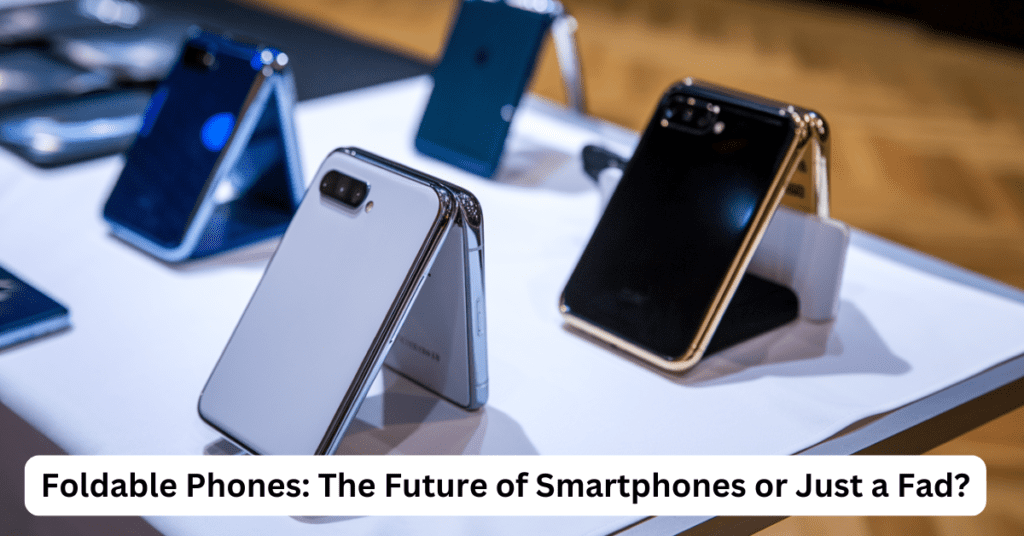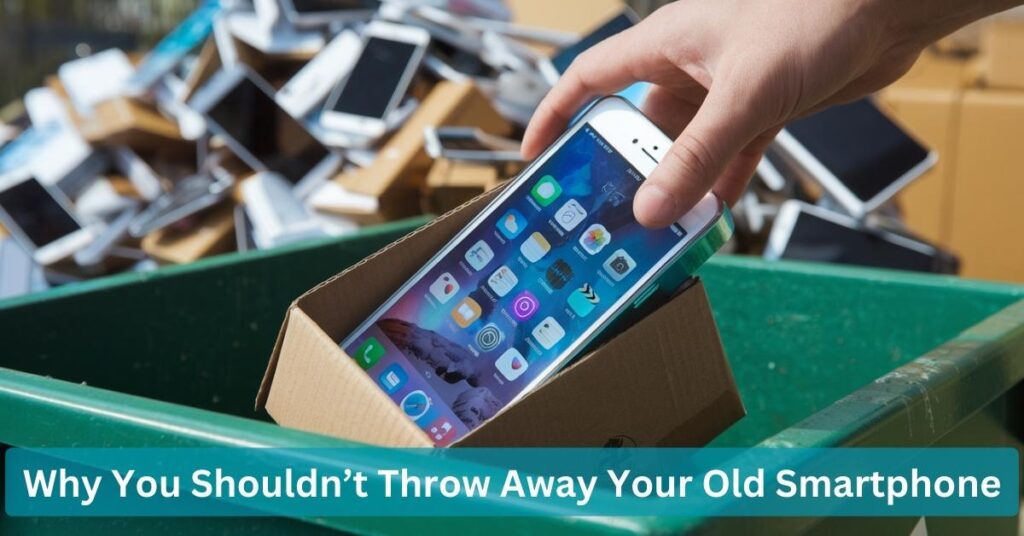The world of mobile phones has come a long way, transforming from bulky devices with limited features to sleek smartphones that fit in our pockets. Over the years, technology has consistently pushed boundaries, and foldable phones are the latest innovation. These devices combine the convenience of a smartphone with the larger screen of a tablet, offering users a new way to multitask, watch videos, or browse the web.
What sets foldable phones apart is their flexible screens, which allow them to fold and unfold effortlessly. This innovation promises a seamless experience, blending style with functionality. For many, foldable phones are more than just a gadget—they’re a glimpse into the future of technology, reshaping how we interact with our devices and opening up exciting possibilities
Future Outlook: A Fad or the Next Big Thing?
-
Technological Maturation
The future of foldable phones hinges largely on technological advancements. Early iterations faced durability issues and limited software optimization, but as companies like Samsung, Huawei, and Google continue to refine their designs, the technology is becoming more robust. Future foldable phones will likely feature stronger hinges, better screens, and improved durability, addressing many of the concerns that currently hold back mass adoption. As the technology matures, foldable phones could become more reliable and practical for daily use.
-
Price Reduction and Mass Adoption
Foldable phones are still priced significantly higher than traditional smartphones, which limits their appeal to tech enthusiasts and early adopters. However, as production costs decrease and competition increases, we can expect prices to fall. This price reduction would make foldable phones more accessible to a wider audience. If manufacturers can make foldable devices more affordable without compromising quality, they could become mainstream, moving beyond the high-end market into the mass market.
-
Software Optimization and App Development
One of the key barriers to foldable phones is the lack of app optimization. Developers need to adapt their apps to take full advantage of the larger, flexible screens. As foldable phones gain traction and more users adopt them, developers will increasingly focus on optimizing their apps for these devices. Better software support will result in a smoother and more productive experience, which will make foldable phones a more attractive option for everyday users.
-
Improved Form Factors and Variety
The future of foldable phones is likely to see an expansion of form factors. While we currently see devices that fold like a book or a clamshell, future models may offer more flexibility in design, such as rollable screens or devices that fold in multiple directions. These innovations would not only enhance functionality but also appeal to different user needs. As the variety of foldable devices expands, they could cater to a broader range of preferences, from compact, highly portable devices to larger, more powerful ones.
-
Integration with Other Technologies
The foldable phone could be just the beginning of a broader trend in flexible and wearable technology. As flexible screens and components improve, foldables could pave the way for other innovations, such as foldable laptops, wearable devices, or even foldable TVs. The convergence of foldable phones with other emerging technologies, like 5G and artificial intelligence, could further enhance their appeal and make them more integrated into our daily lives.
-
Consumer Behavior and Demand
Ultimately, the success of foldable phones will depend on consumer demand. While the novelty factor has attracted early adopters, broader consumer adoption will require addressing real-world concerns, such as durability, battery life, and usability. If foldable phones can prove themselves as practical and reliable devices, they could reshape the smartphone market. However, if the public remains skeptical about their long-term reliability, foldables may remain a niche product.
What Users Love—and Hate—About Foldables
Users love the compact design of foldables, which allows them to carry a large screen in a smaller, pocket-friendly size. The multitasking capabilities are a hit, as they can use multiple apps at once. Foldables also offer a more immersive experience for entertainment, with a bigger display that’s great for videos and gaming.
On the downside, foldable phones are expensive, which can be a major drawback for many. Users also worry about durability, especially with the hinges and folding screens. The visible crease on the screen can be bothersome, and battery life can suffer when using the full display.
Market Trends and Consumer Adoption
Here’s a refined version of the paragraph with the link incorporated naturally:
Foldable phones are becoming more popular, but they still make up a small part of the overall smartphone market. Samsung is leading the foldable trend, with its Galaxy Z series being the most well-known. Other brands like Huawei and Xiaomi are also making foldable phones, aiming to attract more customers. As technology improves and prices drop, foldables are expected to become a bigger part of the smartphone market in the coming years.
Consumers appreciate the large, foldable screens, which are perfect for multitasking and entertainment. Many enjoy having a device that combines the portability of a phone with the screen size of a tablet. However, the high price and concerns about durability are major issues. People also find the crease in the middle of the screen and shorter battery life annoying. If you’re thinking about upgrading or wondering what to do with your current device, check out why you shouldn’t throw away your old smartphone.
Top Contenders in the Foldable Market
1. Samsung Galaxy Z Series: The Pioneer of Mainstream Foldables
Samsung has taken a leading role in the foldable market with its Galaxy Z series, including the Galaxy Z Fold and Galaxy Z Flip. The Galaxy Z Fold caters to productivity enthusiasts with its large, tablet-like screen, perfect for multitasking, while the Galaxy Z Flip appeals to those who value compact, stylish designs. Samsung’s innovations, such as water resistance, advanced hinges, and durable Ultra-Thin Glass (UTG), have set benchmarks for the industry. Regular updates and software optimizations have also made Samsung a trusted name in foldable, offering a reliable user experience.
2. Huawei, Motorola, and the Race to Innovate
Huawei has introduced premium foldable devices like the Mate X series, focusing on outward-folding designs and superior camera systems. These devices are known for their excellent build quality and performance, though they face challenges due to limited availability and software restrictions in some regions. Motorola, on the other hand, has revitalized its iconic Razr series by blending nostalgia with modern foldable technology. The Razr offers a unique vertical fold and emphasizes portability and style, though it has faced criticism for its high price and relatively modest specs.
3. Xiaomi, Oppo, and the Entry of Chinese Giants
Chinese brands like Xiaomi and Oppo are making significant strides in the foldable market. Xiaomi’s Mix Fold and Oppo’s Find N series have gained attention for their innovative designs and competitive pricing. Oppo’s compact, inward-folding approach with the Find N appeals to users looking for a foldable that’s practical and easy to handle. These companies are also pushing the boundaries with features like high-refresh-rate displays and advanced hinge mechanisms, making them strong competitors to Samsung and Huawei.
4. Upcoming Players and Concept Designs
The foldable market is expanding with new players and concept designs. Companies like Google are rumored to be working on foldable, such as the Pixel Fold, which could offer a unique Android experience optimized for dual screens. TCL has showcased rollable and trifold concepts, hinting at a future where foldable could evolve into even more versatile devices. While these concepts are still in development, they highlight the growing interest in foldable technology across the industry.
5. Market Challenges and Innovations
Despite their popularity, foldable phones face challenges such as high prices, durability concerns, and limited app optimization. However, brands are continuously innovating to address these issues. The introduction of foldables with lower price points and improved durability, such as Corning’s bendable glass, signals progress. Additionally, partnerships between hardware makers and software developers aim to improve app compatibility, enhancing the overall user experience.
6. The Future of Foldables: A Competitive Landscape
As competition intensifies, brands are investing heavily in research and development to differentiate their products. Features like under-display cameras, improved battery life, and sustainable materials are becoming focal points. With increasing consumer interest, foldables are poised to become a mainstream segment in the smartphone market. While Samsung remains a dominant player, the presence of companies like Huawei, Motorola, Xiaomi, and Oppo ensures that innovation will continue to drive the foldable revolution.
Benefits of Foldable Phones: Big Perks in a Small Package
Foldable phones offer several benefits that make them a unique choice for tech enthusiasts. One of the biggest advantages is the large screen in a compact design. When folded, these devices are easy to carry around, but once unfolded, they provide the functionality of a tablet, ideal for multitasking, watching videos, or gaming.
Foldables also enhance portability without compromising on screen size. For those who need extra screen space for work or entertainment, foldable phones offer the flexibility of two screens in one device. Additionally, their innovative design is perfect for users seeking something cutting-edge and different from traditional smartphones.
These devices combine the power of a large display with the convenience of portability, offering a new way to experience mobile technology.
Economic Feasibility: Luxury or Necessity?
Price Points and Their Justification
Foldable phones are typically priced higher than traditional smartphones due to their complex engineering and innovative technology. The cost of manufacturing flexible displays, durable hinges, and other unique components contributes to the premium price. While some might view foldables as a luxury item, others argue that they offer value for money by combining the functionality of both a smartphone and a tablet. However, the high price tag limits accessibility for many users, making them a more attractive option for tech enthusiasts and early adopters rather than the average consumer.
Comparison with Traditional Flagship Phones
When compared to traditional flagship phones, foldables are considerably more expensive. Premium smartphones like the iPhone 15 or Samsung Galaxy S23 may offer similar processing power, camera features, and software experiences but at a much lower price point. However, foldable phones provide a unique form factor and larger screens that traditional phones cannot match. For users seeking a compact yet large-screen experience, foldables may justify the extra cost, but for those prioritizing value over novelty, the premium price may be difficult to justify.
Conclusion
Foldable phones present a groundbreaking innovation, offering versatility, large screens in compact forms, and a futuristic design. However, they come with challenges, including high prices, durability concerns, and limited app optimization. Users love the flexibility of multitasking and entertainment, but many are hesitant due to the cost and potential long-term issues with hinges and displays.
For potential buyers, it’s essential to weigh the unique benefits against the price and reliability. Foldables are ideal for those who want cutting-edge technology and don’t mind paying a premium. The future of foldable phones looks promising, with continuous improvements in durability, affordability, and software optimization. As the technology evolves, foldables may become a more mainstream and practical option for a broader audience.
FAQs
1. What is the disadvantage of a foldable phone?
The main disadvantages of foldable phones are their high price, durability issues (such as potential wear on hinges and screens), and limited app optimization for the foldable format. Additionally, the visible crease on the screen and potential shorter battery life when using the full display are also concerns.
2. Why is Apple not making foldable phones?
Apple has not released foldable phones yet due to concerns about durability, cost, and user demand. The company perfects existing technologies before diving into new, unproven formats.
3. Why are foldable phones not popular?
Foldable phones are unpopular due to their high cost, durability issues, and limited app optimization. Additionally, many users find the creased screen and battery life to be drawbacks.
4. Which is better, flip or fold?
It depends on personal preference. Flip phones are more compact and easier to carry, while fold phones offer larger screens and better multitasking. Flip is better for portability, and fold is better for productivity and entertainment.



